Common names: swallow, barn swallow
Scientific name: Hirundo rustica
Family: Hirundinidae (swallows and martins)
Habitat: grassland, heathland, woodland, towns
Diet: flies and aphids
Predators: birds of prey, especially hobbies
Origin: native
Symbol of summer and aerial acrobat. A bird with an instantly recognisable silhouette, the speedy swallow can out-fly most predators.
Common names: swallow, barn swallow
Scientific name: Hirundo rustica
Family: Hirundinidae (swallows and martins)
Habitat: grassland, heathland, woodland, towns
Diet: flies and aphids
Predators: birds of prey, especially hobbies
Origin: native
Swallows are dark blue with a cream underside. Their characteristic tail has two distinctive streamers when in flight, and they have long blue-black wings which appear curved and slender when perched. They have a dark throat and forehead (more of a rusty-buff colour in juveniles) and a blue-black nape and crown.
Not to be confused with: swifts, house martins and sand martins. Swifts are dark brown, sickle-shaped and lack the creamy underside. House martins are a similar colour but have a tell-tale white rump. Both house martins and sand martins also have much shorter tails.
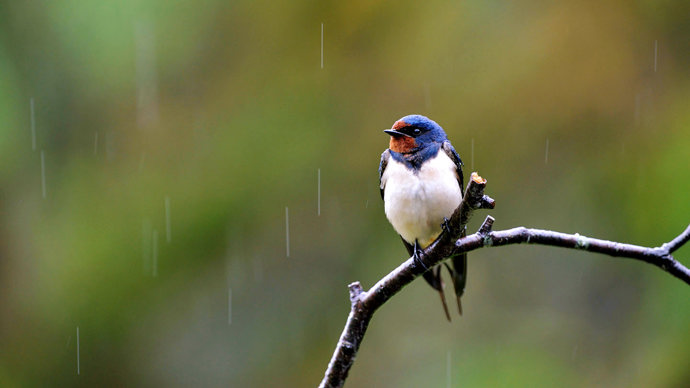
Credit: Our Wild Life Photography / Alamy Stock Photo
Swallows feed on flies and aphids, which they catch as they fly. They drink by skimming low over lakes or rivers and scooping up water with their open beaks.
Until the late 19th century, some people believed that swallows hibernated underwater.
Female swallows choose mates with the most symmetrical tail streamers, as this is a sign of good health and good genes to pass on to chicks.
Swallows produce two or three clutches of around four eggs per year. They build their cup-like nests on sheltered ledges, beams and joists in sheds and outbuildings. Each nest is constructed from mud interwoven with grasses and may be reused season after season.
Chicks fledge after a few weeks but will continue to be fed by their parents for a while longer.
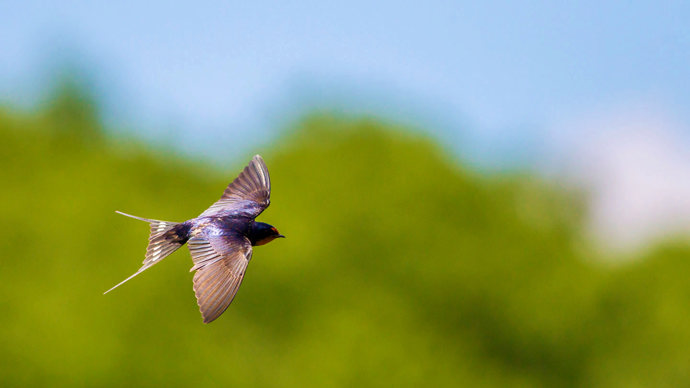
Credit: Phil Savoie / naturepl.com
The swallow is a summer visitor to the UK and one of the latest to leave after breeding. They arrive in April, and most depart by late September, crossing the Sahara desert to reach their wintering grounds in southern Africa.
Swallows are found in open country, usually near water and farmland where flying insects are abundant. They also gather in restless flocks in autumn and can be seen collecting together on telephone wires, often with martins.
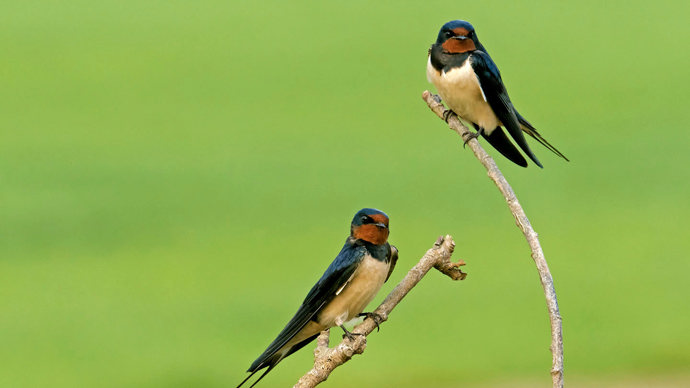
Credit: Chris Gomersall / naturepl.com
Look out for swallows throughout the summer as they fly overhead, or bring food to nests beneath eaves. Their chattering call helps distinguish them from screaming swifts when in flight. As autumn approaches, groups of swallows will also congregate at roosting sites such as reed beds.
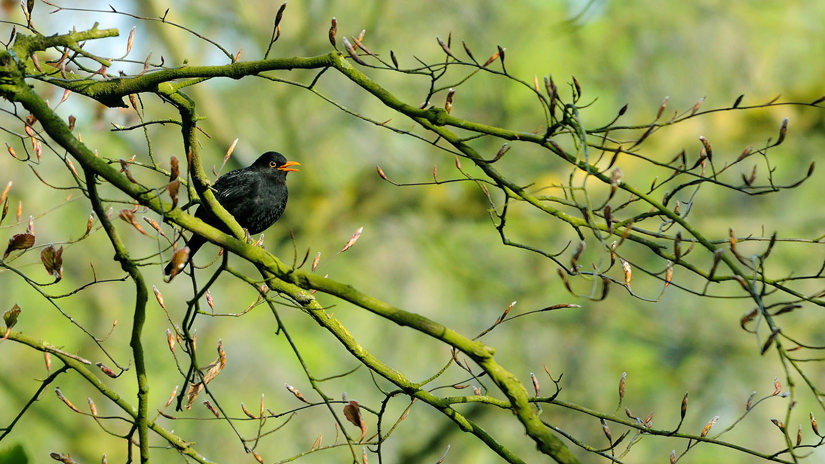
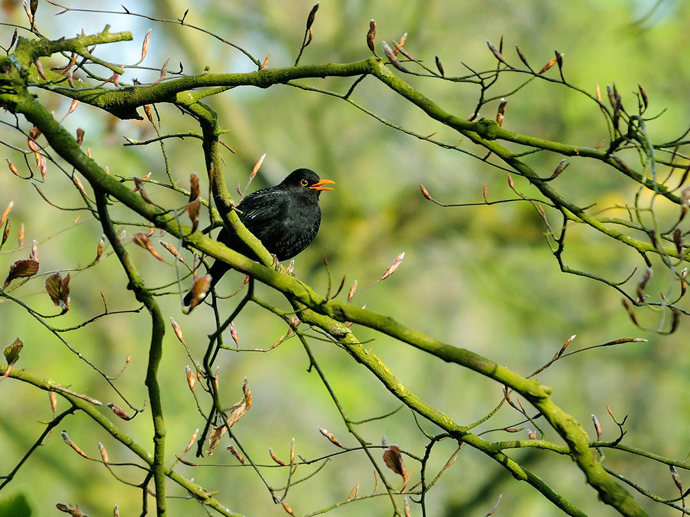
External link
Record the comings and goings of key feathered friends and help scientists track the effects of climate change on wildlife.
One swallow was recorded as having flown 12,000 kilometres from Johannesburg to Russia in just 34 days.
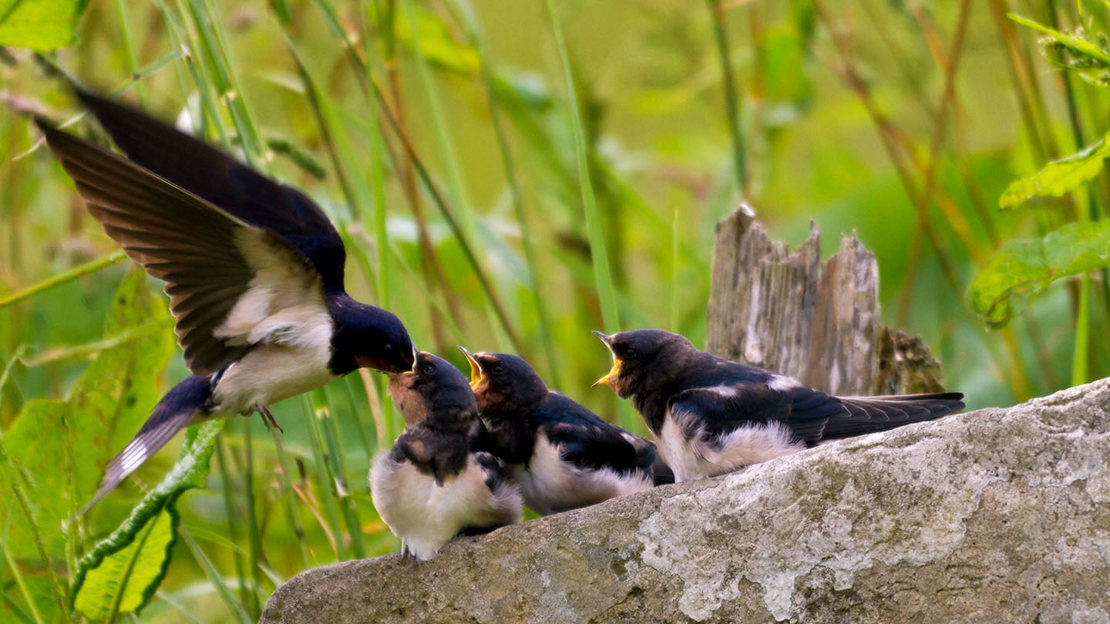
Swallows often nested in chimneys before the advent of central heating.
Changing farming practices and the effects of climate change are thought to be reducing insect abundance across Europe, causing knock-on declines in swallow numbers.